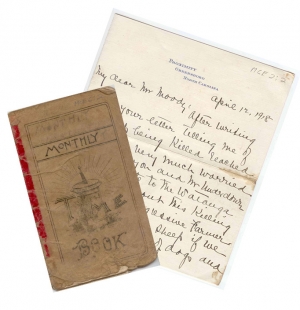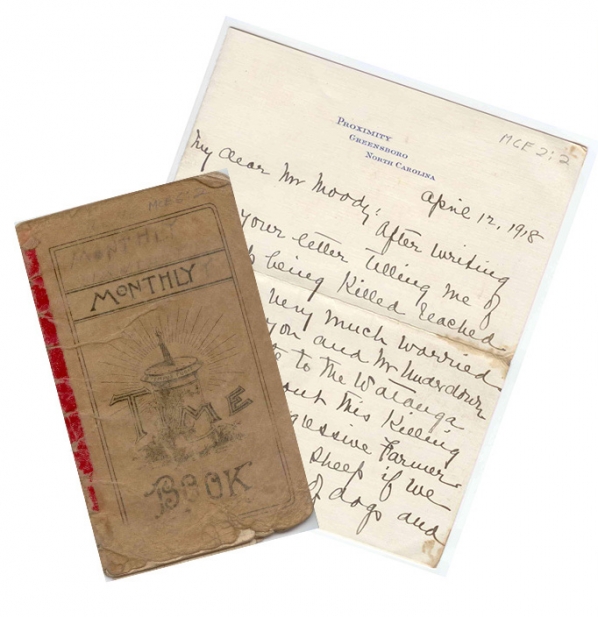The idyllic image of the European country estate has been a recurring theme with popular literature and (more recently) in film for nearly two centuries. In the late nineteenth century the mountains of western North Carolina served as a backdrop for several envisionings of this romanticized lifestyle brought into reality by gentry lacking in ancient European lineage but rich in American industrial wealth. One such contrivance of manorial life belonged to the family of Moses and Bertha Lindau Cone. Moses, born to Jewish immigrants in the mountain town of Jonesborough, Tennessee, was raised in Baltimore, Maryland within a large family that included nine siblings. The Cones originally found financial success in the grocery business but later emerged at the head of a textile empire centered in the piedmont of North Carolina.
Although relatively dwarfish by comparison to Biltmore Estate, George Vanderbilt's 125,000 acre "mountain retreat" completed in the 1880s, the Cone's 3,500 acre Flat Top Manor channeled a rustic grandeur which hearkened back to the manors and villas of Europe. Throughout the early twentieth century the expansive property housed tenant workers engaged in tasks ranging from the raising of purebred Shropshire sheep to the maintenance of an estimated 10,000 apple trees contained within the estate's orchards. The manor house, completed in 1901, is now the centerpiece of Moses Cone Memorial Park located on the Blue Ridge Parkway.
The Moses Cone Estate Collection (AC.132) located here in the archives contains correspondence and a ledger regarding the operations of the estate from 1905 until 1945. The correspondences between Bertha Cone (the estate's head after Moses' death in 1908) and A. C. Moody, the estate's manager, reveal much about the daily operations of the property. Many of the letters beginning "My Dear Mr. Moody..." address topics such as the sale of sheep and the pay of estate employees. The Moses Cone Estate Collection presents researchers with an opportunity to explore the history of a unique and opulent subculture within Appalachian life, one which settled visions of the Old World within the landscape of the Carolina mountains.

